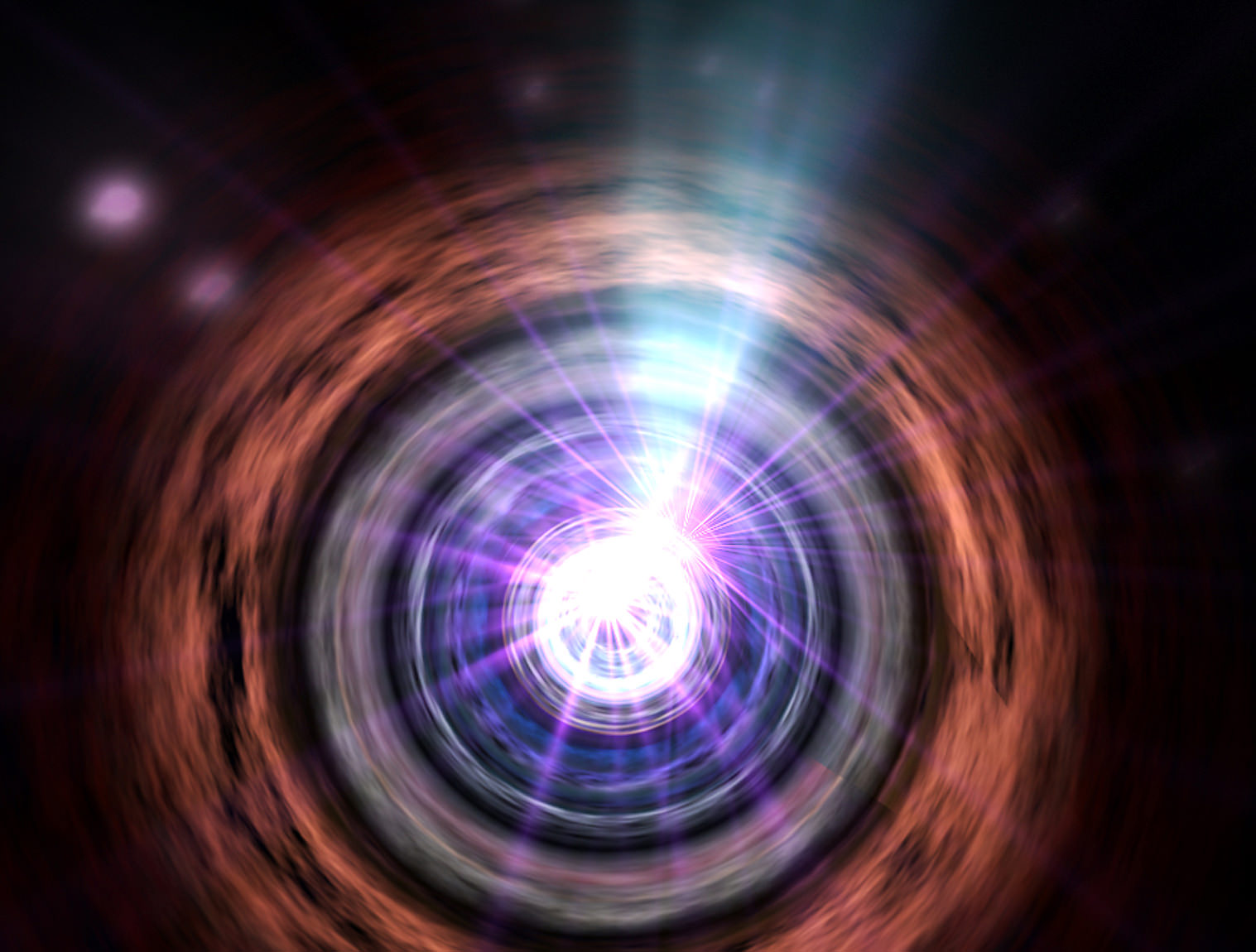Is there anywhere in the Universe where we can escape from radiation? Certainly not here on Earth. And not in space itself, which is filled with diffuse radiation in the form of gamma rays and neutrinos. Scientists have struggled to explain where all those gamma rays and neutrinos come from. A trio of researchers is proposing a source for all that radiation in a new paper: resting black holes.
Supermassive Black Holes (SMBH) likely reside in the center of every large galaxy like the Milky Way. When those SMBHs are actively accreting matter they can spew out a lot of radiation across the entire spectrum, from radio waves to gamma rays. When that happens they’re called active galactic nuclei. But what about SMBHs that are quiet?
A new study says even quiescent SMBHs are emitting gamma rays and neutrinos. The discovery helps explain why the Universe is awash in energetic particles.
The title of the paper is “Soft gamma rays from low accreting supermassive black holes and connection to energetic neutrinos.” It’s published in the journal Nature Communications, and the lead author is Shigeo Kimura from Tohoku University in Sendai, Japan.

Neutrinos are nearly massless subatomic particles and are electrically neutral, which is where they get their name. As a result, their gravitational interaction is near zero, and they don’t interact with the strong nuclear force either. They’re extremely difficult to detect, and they’re passing through your body right now.
Gamma rays, on the other hand, are not difficult to detect. They’re the most energetic photons in the Universe and you definitely don’t want any passing through your body. They’re released in atomic bomb detonations, among other things. Space-based detectors have found gamma rays with voltages in the gigaelectron range. If electron volt ranges aren’t your thing, just think of them as more energetic than visible light by orders of magnitude.
So scientists know a lot about both neutrinos and gamma rays, they just aren’t sure where they all come from. This research might have the answer. “The Universe is filled with a diffuse background of MeV gamma-rays and PeV neutrinos, whose origins are unknown. Here, we propose a scenario that can account for both backgrounds simultaneously,” the authors write.
Scientists think they know where powerful background gamma-rays in the gigaelectron volt (GeV) to teraelectron (TeV) volt ranges come from. They come from AGNs and probably star-forming galaxies. But the source of softer gamma-rays, those in the megaelectron volt (MeV) ranges are unknown. Same with many neutrinos.
This paper shows that low luminosity galactic nuclei could account for both the neutrinos and the gamma rays.

A black hole’s enormous mass and gravitational pull draws matter toward it. It forms an accretion disk of swirling matter, and eventually, the matter falls into the black hole. When that happens an enormous amount of gravitational energy is released. That energy heats up gas around the hole and creates plasma. In this case, the low-accreting black hole has insufficient cooling and the plasma’s temperature can reach tens of billions of degrees Celsius.
What happens is the plasma energizes protons to an extreme degree. They can be 10,000 times more energetic than what the Large Hadron Collider (LHC) can achieve, and the LHC is our most powerful particle accelerator. As these high-speed protons interact with matter and radiation, they produce neutrinos. This can account for the higher energy range neutrinos detected in space.
A similar mechanism produces gamma-rays. As the electrons reach extremely high temperatures, they become efficient producers of gamma-rays in the MeV range through a process called Comptonization.

So the high-temperature plasma around quiet black holes can produce neutrinos and gamma-rays. Even though these types of black holes are dim and difficult to see, there are a lot of them. It’s reasonable to think they could account for background radiation in the form of gamma-rays and neutrinos.
But this is just a proposed mechanism. There’s no conclusive proof yet. Where will that come from?
Most of our gamma-ray detectors aren’t tuned to the MeV frequency. They’re tuned to higher energy levels. What’s needed is what the authors call a “multimessenger” detector. That’s a detector that detects both gamma-rays and neutrinos at the same time, in the right energy ranges. Proposed missions like e-ASTROGAM, the All-sky Medium Energy Gamma-ray Observatory (AMEGO), and the Gamma-Ray and AntiMatter Survey (GRAMS) should help.

